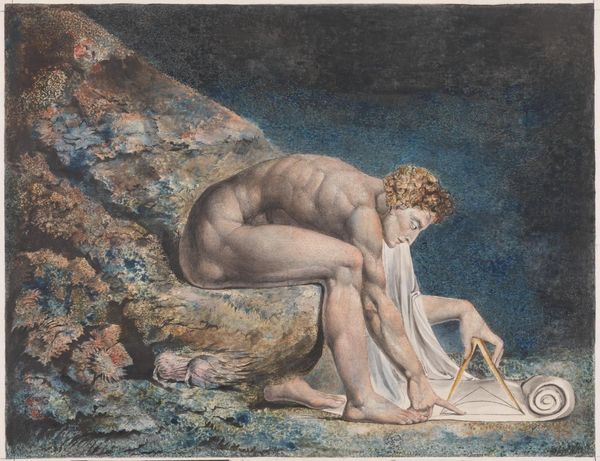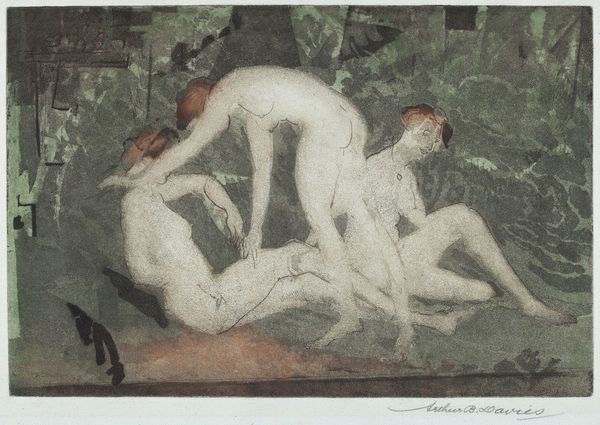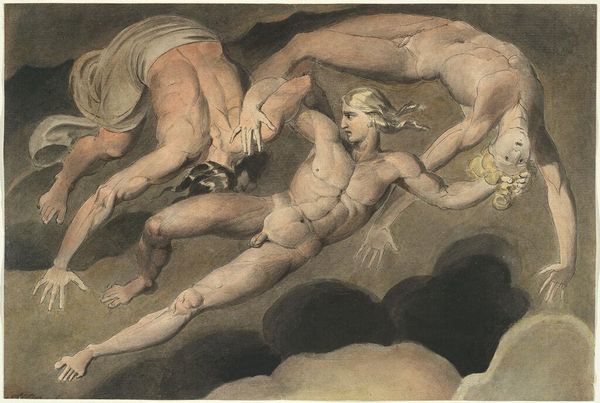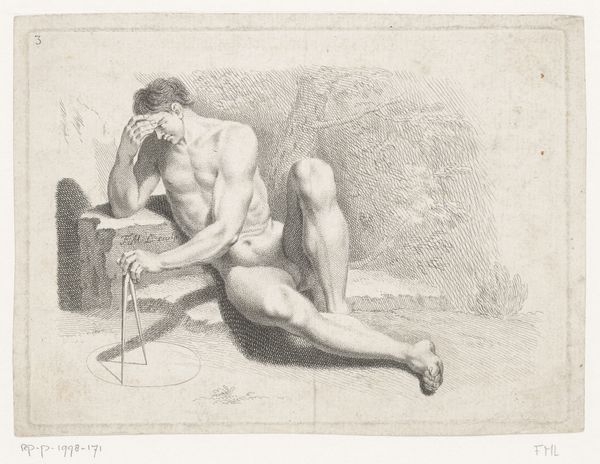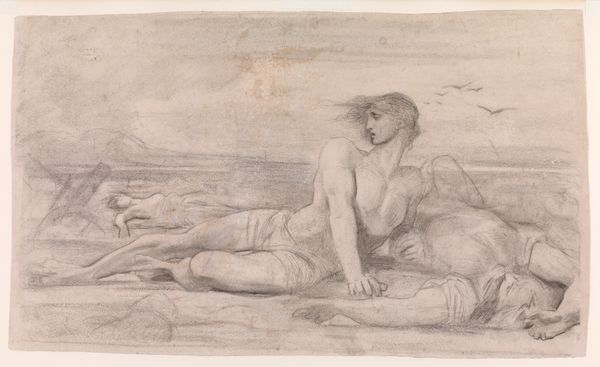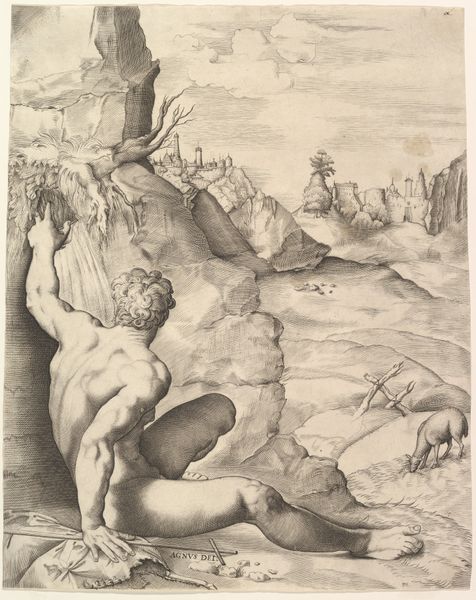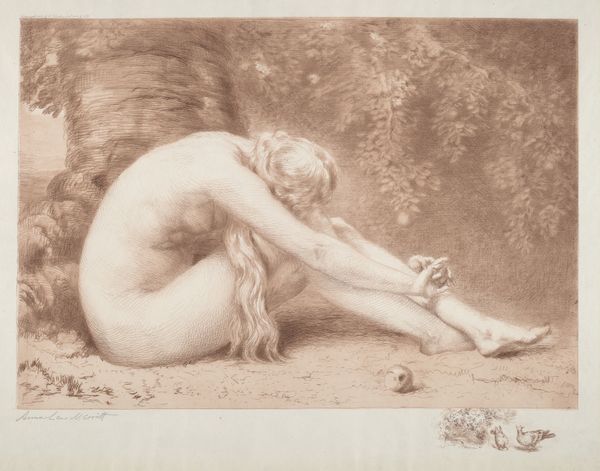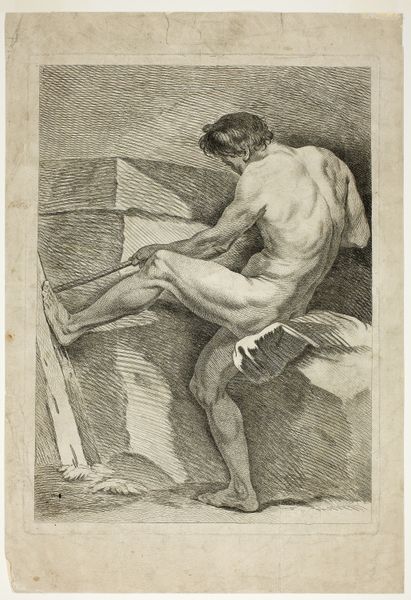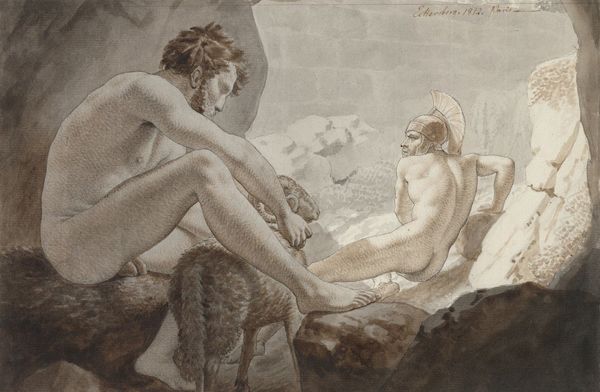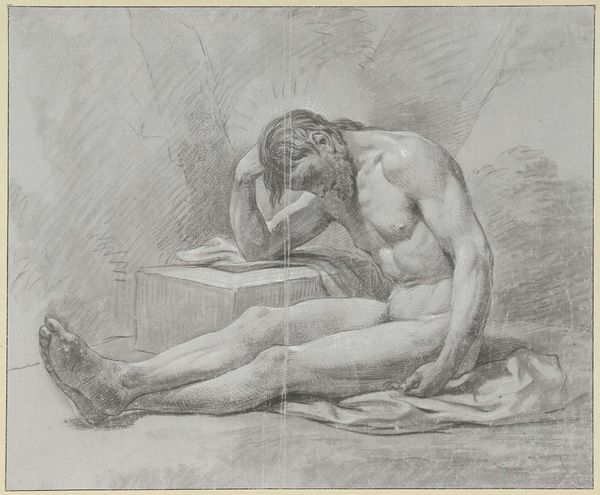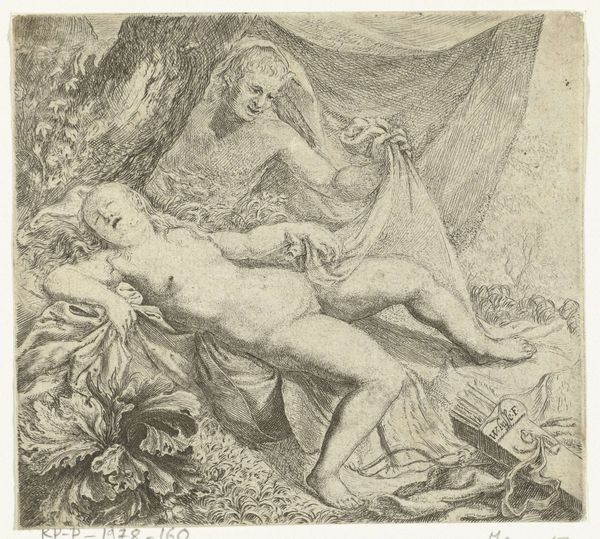
Dimensions: support: 460 x 600 mm
Copyright: NaN
Curator: Here we have William Blake's "Newton," part of the Tate Collection, depicting Isaac Newton with a compass. Editor: There's a sculptural quality to the figure. He looks powerful, almost godlike, but constrained and separate from nature. It's quite a stark contrast. Curator: Precisely. Blake critiqued the Enlightenment's emphasis on reason, seeing it as limiting human perception. Newton, in Blake's view, is narrowed, confined by his focus. Editor: You can see it in the way he's using the compass. It's a tool, but also a barrier. What about the material choices here? How did Blake's printmaking affect this message? Curator: Blake used watercolor and etching. His methods were revolutionary, allowing him to control color and line in unconventional ways, echoing his belief in individual vision. Editor: So, the visible process becomes part of the commentary on restricting reason? Curator: Yes, pushing against the constraints of academic art. Editor: I hadn't considered the connection between Blake's methods and the theme itself. Thanks. Curator: A pleasure to share these insights.
Comments
Join the conversation
Join millions of artists and users on Artera today and experience the ultimate creative platform.
tate 7 months ago
⋮
Here, Blake satirises the 17th-century mathematician Isaac Newton. Portrayed as a muscular youth, Newton seems to be underwater, sitting on a rock covered with colourful coral and lichen. He crouches over a diagram, measuring it with a compass. Blake believed that Newton’s scientific approach to the world was too reductive. Here he implies Newton is so fixated on his calculations that he is blind to the world around him. This is one of only 12 large colour prints Blake made. He seems to have used an experimental hybrid of printing, drawing, and painting. Gallery label, April 2024
